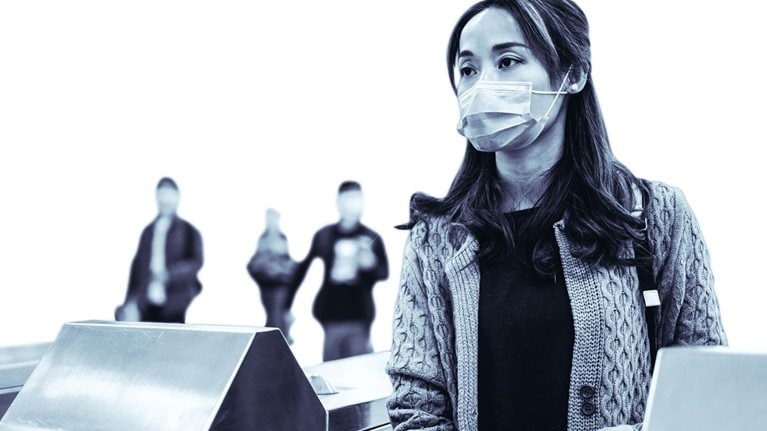While the global travel sector continues to withstand the negative impact of the COVID-19 pandemic, some markets have started to show signs of recovery. In China, where the virus first broke out, domestic airline passenger levels have grown steadily, and now sit at 50 percent of precrisis levels. Hotel occupancy rates have also improved since the depths of the crisis, and are now back to 60 percent of last year’s levels. Domestic travel is now positioned to accelerate as summer approaches, with segments that drive demand during this period, such as families, reporting an increased desire to travel in the near term. In this article we explore some key trends in travel, and how these have changed from the early stages of COVID-19 recovery, in April.
Last month, we published early insights of traveler sentiment gathered directly from consumers in China. To better understand how quickly sentiment is changing in China, which was among the first to recover from the crisis, we conducted the same traveler sentiment survey in mid-May, a month after we collected the initial findings. While many trends from the April findings persisted through May, the latest survey data indicates some changes in the profile of travelers expecting to make a trip over the summer season. The data shows a return to previous trends, with families and retirees showing an interest in getting back into the market.
To assess how traveler responses have changed over time, we used the same methodology as the previous survey. Respondents to our survey took a domestic or international leisure trip within the past year, and were based in Shanghai, Beijing, Guangzhou, Shenzhen, Chengdu, Xian, Xiamen, and Wuhan. We collected data from May 13 to May 19, and compared it with the results of our April traveler sentiment survey.
What trends have remained stable?
Four trends highlighted in April are consistent with the responses to our survey in May, which gives us confidence that these trends will persist through the summer and early fall. First, domestic destinations remain a top choice due to outbound travel restrictions, with 52 percent of respondents preferring this choice versus 55 percent in April. Second, trips to scenic outdoor spots, “foodie” tours, and trips to family attractions constitute the most popular types of trips, as people continue to avoid crowded tourist spots. Thirdly, we anticipate fewer leisure travel groups as people plan to travel mainly with immediate family members. Finally, guided group tours remain less attractive to travelers than self-guided and self-driven trips, compared with pre-COVID-19 traveler patterns.
What positive trends do we see between April and May?
Family summer vacation is back on the agenda. In April, being “single and never married” was statistically the strongest predictor of travelers reporting they were going to be taking a trip in the near term. That signal has faded in the mid-May data. Families and older travelers are increasingly reporting plans to travel over the summer, which indicates a return to historic patterns. The proportion of families reporting that they plan to travel between now and the next National Holiday has increased 11 percentage points since April. (Exhibit 1). These respondents are driving the high preference for scenic outdoor, health and wellness, and family and kids’ activities, which suggests that the summer vacation season is likely to be strong, though perhaps tempered by the impact of COVID-19.

Positive sentiment for travel expands beyond residents of Shanghai and Chengdu. In April, cities that were less impacted by COVID-19, such as Shanghai and Chengdu, were overrepresented in the pool of travelers planning a trip in the next several months. The mix has now shifted, with 17 percent to 20 percent of travelers in cities including Shanghai, Beijing, Guangzhou, Xiamen, and Wuhan expressing plans to travel in the next four months.
Positive sentiment for travel continues to rise. Travel sentiment, measured by plans to travel in the next four months, and the perception of the safety of travel, has improved across all eight cities surveyed. Wuhan, once the epicenter of the pandemic, has shown the sharpest increase among people willing to travel in the next four months. Perceptions of safety have also increased from April to May, especially for both short- and long-haul domestic trips (Exhibit 2). Confidence in safety protocols also grew from April to May. This is true across all cities, for people who are 35 and above, and for travelers who are married with kids.

Improvements in sentiment are being reflected in booking behavior for domestic flights. The increase in the percentage of short-term travelers across cities from April to May boosted bookings of domestic flights (Exhibit 3). While flight bookings in April and May have not returned to pre-COVID-19 levels, as indicated by the negative year-on-year change, travel recovery rates have shown big improvements in the past month, especially for cities such as Shenzhen and Chengdu.

Trends to watch
While the travel outlook is stable through the National Holiday period, travel plans for later in the year are uncertain. The percentage of respondents who indicated they were planning their next leisure trip in each of the periods below has remained relatively consistent from May until the National Holiday (Exhibit 4). However, there is a softening toward the end of 2020. Further, we see a large increase (11 percentage points) in the number of “not sure” responses to this question, compared with April. Coming off a very strong May Labor holiday travel season, we had expected to see an increase in travelers planning trips for the next six months. A relatively flat trajectory, combined with the responses further out, is worth watching.

Part-time workers are deferring travel. Part-time workers (defined as those working less than 30 hours per week) account for the increase from 7 percent to 18 percent of respondents who are “not sure” when their next trip will be. In April, only 8 percent of these workers indicated uncertainty around the timing of their next trip. That rose in May to 23 percent. Economic uncertainty may be a factor, as 61 percent of this group report a reduction in income in May. Furthermore, 52 percent of this segment is expecting a reduction in income over the next month. These factors taken together may be driving more conservative spending behavior toward high ticket discretionary items such as travel.

From thinking about the next normal to making it work: What to stop, start, and accelerate
Safety has not improved as quickly as consumers expected. Safety sentiment has increased across all eight cities for domestic short- and long-haul trips. However, travelers did not score May as highly as they expected to back in April (Exhibit 5). While in April travelers were expecting strong improvements in safety by May, when we surveyed them again in May, their perceptions only showed minor improvements. As travelers continue to remain very positive in their forward projections of how quickly safety will improve, it is important for players along the travel value chain to support these expectations and avoid the emergence of a “perceptions gap” from travelers. Respondents who have the lowest future expectations toward safety show a strong preference for deferring travel to nine months out, after the Chinese New Year. Increasing the perception of safety is one lever that can help pull some of this demand forward.

As the travel industry continues to recover, players can capitalize on emerging trends to boost demand by:
- Focusing on safety protocols: Players can emphasize their strict safety protocols with travelers through verbal communication, as well as visual cues such as frequent cleaning and sanitizing of travel products and facilities to win back travelers. Going a step further, players can leverage technology to enable contactless operations, self-service procedures, and robotic assistance to minimize physical contact and increase the perception of safety. As our data shows, the perception of safety is a critical driver in bringing customers back.
- Adapting offerings: Players in the travel sector can adapt offerings to be more flexible and economical for the increasing number of travelers who are uncertain over their next trip, or who are choosing to defer travel amidst an uncertain economic recovery. Players can introduce more flexible terms for changing or refunding bookings to lower consumers’ risk. Travel providers can also consider introducing lower-cost products and tour packages that appeal to part-time workers and customer segments that have taken a hit to their income.
- Focusing on families: In the medium to long-run, the family segment will continue to be the engine propelling demand for leisure travel. Travel players could attract this core segment by structuring product offerings that cater to their preference for small group tours in scenic outdoor spots, health and wellness programs, and family-oriented activities. Road trips and outdoor adventures, activities common among families in the West, but until recently less popular with Chinese travelers, could start gaining traction in China.


